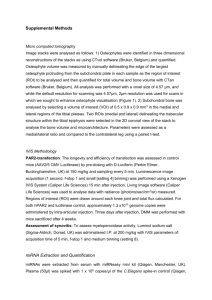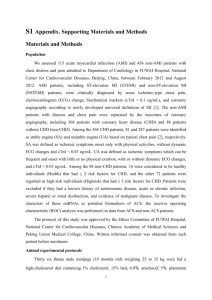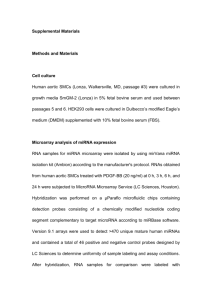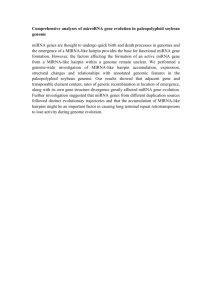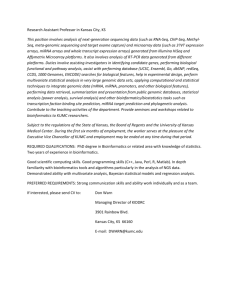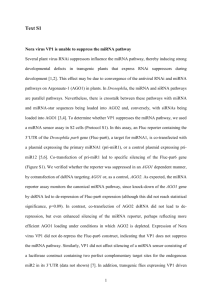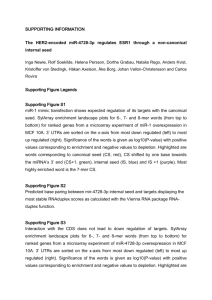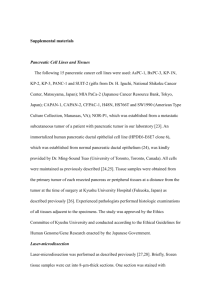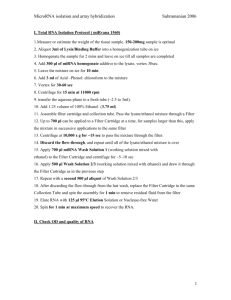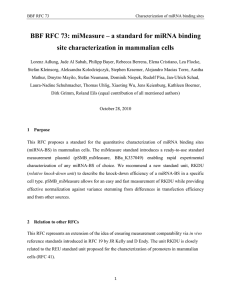file
advertisement
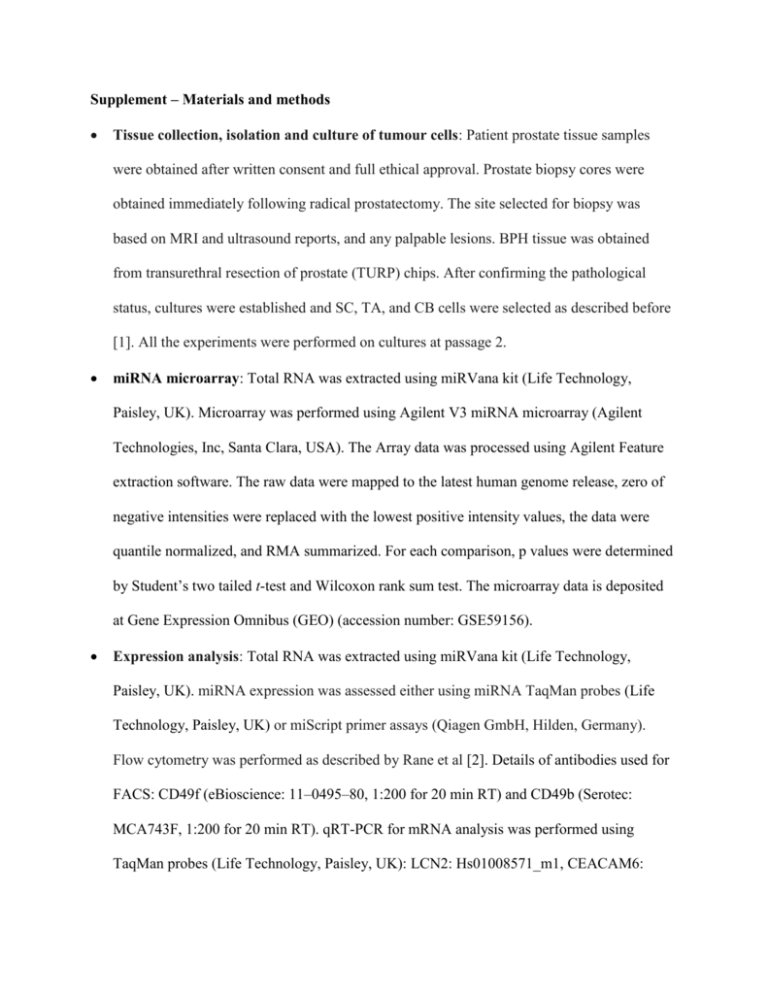
Supplement – Materials and methods Tissue collection, isolation and culture of tumour cells: Patient prostate tissue samples were obtained after written consent and full ethical approval. Prostate biopsy cores were obtained immediately following radical prostatectomy. The site selected for biopsy was based on MRI and ultrasound reports, and any palpable lesions. BPH tissue was obtained from transurethral resection of prostate (TURP) chips. After confirming the pathological status, cultures were established and SC, TA, and CB cells were selected as described before [1]. All the experiments were performed on cultures at passage 2. miRNA microarray: Total RNA was extracted using miRVana kit (Life Technology, Paisley, UK). Microarray was performed using Agilent V3 miRNA microarray (Agilent Technologies, Inc, Santa Clara, USA). The Array data was processed using Agilent Feature extraction software. The raw data were mapped to the latest human genome release, zero of negative intensities were replaced with the lowest positive intensity values, the data were quantile normalized, and RMA summarized. For each comparison, p values were determined by Student’s two tailed t-test and Wilcoxon rank sum test. The microarray data is deposited at Gene Expression Omnibus (GEO) (accession number: GSE59156). Expression analysis: Total RNA was extracted using miRVana kit (Life Technology, Paisley, UK). miRNA expression was assessed either using miRNA TaqMan probes (Life Technology, Paisley, UK) or miScript primer assays (Qiagen GmbH, Hilden, Germany). Flow cytometry was performed as described by Rane et al [2]. Details of antibodies used for FACS: CD49f (eBioscience: 11–0495–80, 1:200 for 20 min RT) and CD49b (Serotec: MCA743F, 1:200 for 20 min RT). qRT-PCR for mRNA analysis was performed using TaqMan probes (Life Technology, Paisley, UK): LCN2: Hs01008571_m1, CEACAM6: Hs03645554_m1, NF-kß1: Hs00765730_m1, WNT5A: Hs00998537_m1, RPLP0: Hs99999902_m1, ID2: Hs04187239_m1, PROM1: Hs01009250_m1, and SOX2: Hs01053049_s1. Irradiation of cells: Cells were irradiated using a RS2000 X-Ray Biological Irradiator, which contains a Comet MXR-165 X-Ray Source (Rad-Source Technologies Inc., Suwanee, GA, USA). A dose of 2, 5, or 10 Gy was administered. Cells were stained with Trypan Blue stain (Sigma-Aldrich, Dorset, England). The live cells were counted using Neubauer’s haemocytometer. Cell transfection: Cells were transfected with 50nM miScript miRNA mimic for miR-548c3p (Qiagen GmbH, Hilden, Germany) and appropriate controls (Qiagen GmbH, Hilden, Germany) using Oligofectamine (Life Technology, Paisley, UK). Transfected cells were washed with Phosphate buffered saline (PBS) twice after 8 hours to minimise cellular toxicity of transfection reagents. All the analysis was performed 72 hours after transfection. Clonogenic recovery assays were performed as described by Rane et al [2]. Published transcriptomic data analysis: CRPC miRNA expression pattern was obtained from Jalava et al [3]. Statistical analysis: All data are representative of three or more experiments. Errors are the standard deviation (SD) of mean. The significance was determined using Student’s two-tailed t test. Supplementary references [1] Collins AT, Berry PA, Hyde C, Stower MJ, Maitland NJ. Prospective identification of tumorigenic prostate cancer stem cells. Cancer Res 2005;65:10946–51. [2] Rane JK, Droop AP, Pellacani D, et al. Conserved two-step regulatory mechanism of human epithelial differentiation. Stem Cell Reports 2014;2:180–8. [3] Jalava SE, Urbanucci A, Latonen L, et al. Androgen-regulated miR-32 targets BTG2 and is overexpressed in castration-resistant prostate cancer. Oncogene 2012;31:4460–71.
